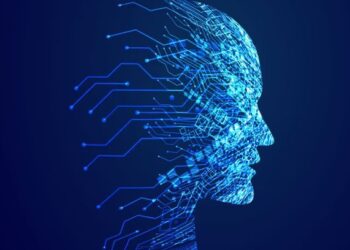In the landscape of modern healthcare, a quiet but profound revolution is taking place. For centuries, medicine has been defined by physical interventions—pills, injections, surgeries, and in-person therapies. But as technology intertwines with every aspect of our lives, a new class of treatment is emerging from the digital ether. This is the world of Digital Therapeutics (DTx), a sophisticated and clinically validated field that uses software to prevent, manage, or treat a broad spectrum of diseases and disorders.
This is not about the thousands of wellness apps that count your steps or remind you to meditate. Digital Therapeutics are in a league of their own, representing a paradigm shift from supportive health tools to standalone, evidence-based medical interventions. They can be prescribed by a doctor, are subject to regulatory oversight, and are designed to deliver tangible clinical outcomes. As chronic diseases surge globally and healthcare systems strain under immense pressure, DTx are rising not just as a novelty, but as a necessary evolution in how we deliver care.
This in-depth article explores the transformative growth of Digital Therapeutics. We will dissect what truly defines this new category of medicine, explore the powerful forces fueling its rapid expansion, and examine how these digital treatments work in practice. From managing chronic conditions like diabetes to providing cognitive behavioral therapy for depression, we will uncover the real-world applications and navigate the significant challenges of regulation, reimbursement, and adoption. This is the definitive guide to understanding the future of medicine—a future that is already here.
Defining the Digital Dose: What Are Digital Therapeutics?
To grasp the significance of DTx, it is crucial to distinguish them from the crowded marketplace of general health and wellness applications. While a fitness app might encourage healthy habits, a Digital Therapeutic is engineered to directly treat a medical condition. They are built on a foundation of rigorous clinical evidence and are designed to integrate seamlessly into patient care pathways.
At their core, Digital Therapeutics are software-based interventions that deliver therapeutic value to patients. They leverage the power of technology—accessible through smartphones, tablets, and computers—to influence patient behavior and provide personalized, adaptive care outside the confines of a clinic. Think of them not as a replacement for clinicians, but as a powerful, scalable tool that extends their reach and enhances their ability to manage patient health.
To clarify this distinction, consider the key pillars that separate true DTx from other digital health tools:
A. Clinical Validation and Evidence-Based Outcomes: This is the most critical differentiator. A DTx product must undergo rigorous clinical trials, often randomized controlled trials (RCTs), to prove its safety and effectiveness, similar to a new pharmaceutical drug. The results of these trials are typically published in peer-reviewed journals.
B. Regulatory Oversight: Because they make medical claims, DTx products are subject to review and clearance or approval by regulatory bodies. In the United States, this is the Food and Drug Administration (FDA). In Europe, it’s the CE marking process. This oversight ensures that the product is safe, effective, and performs as intended.
C. Prescription or Clinician Guidance: Many of the most powerful DTx are classified as Prescription Digital Therapeutics (PDTs). These can only be accessed via a prescription from a qualified healthcare provider, ensuring that the right patients are using the right intervention for their specific condition.
D. Focus on Treatment and Intervention: Unlike apps that simply track data or provide information, DTx are designed to deliver a specific therapeutic intervention. A DTx for insomnia, for example, will actively deliver a program of Cognitive Behavioral Therapy for Insomnia (CBT-I) through a structured, interactive software program.
The Accelerants: Driving Forces Behind the DTx Revolution
The rapid emergence of Digital Therapeutics is not a coincidence. It is the result of a perfect storm of technological advancement, evolving healthcare needs, and a fundamental shift in patient expectations. Several key drivers are propelling this field forward.
A. The Unmanageable Burden of Chronic Disease: Conditions like Type 2 diabetes, hypertension, asthma, and depression are the leading cause of disability and death worldwide. These diseases require continuous management, lifestyle modification, and patient engagement—areas where traditional episodic care often falls short. DTx offer a scalable solution for providing 24/7 support, education, and behavioral interventions to these massive patient populations.
B. The Smartphone as a Medical Device: The ubiquity of the smartphone has placed a powerful computer, sensor, and communication hub in the hands of billions of people. This personal device is the ideal delivery mechanism for DTx, allowing for real-time data collection, personalized feedback, and on-demand access to therapeutic content.
C. Advancements in Data Science, AI, and Machine Learning: Modern DTx are not static programs. They leverage sophisticated algorithms to create adaptive, personalized experiences. By analyzing user data, an AI-powered DTx can identify when a patient is struggling, predict potential issues, and adjust the intervention in real-time to provide the most effective support.
D. The Shift to Value-Based Healthcare: Healthcare systems globally are moving away from fee-for-service models towards value-based care, where providers are reimbursed based on patient outcomes. DTx are perfectly aligned with this model, as they are designed to improve outcomes, enhance patient adherence, and reduce long-term costs, such as expensive hospitalizations or emergency room visits.
E. Patient Empowerment and Consumerization of Health: Today’s patients are no longer passive recipients of care. They are active participants who demand more information, control, and convenience. DTx cater directly to this demand by providing tools that empower patients to manage their own health, understand their condition better, and engage with their care plan on their own terms.
The Mechanism of Action: How Digital Therapeutics Work

Unlike a chemical drug that works on a biological pathway, a Digital Therapeutic works by delivering targeted psychological and behavioral interventions through technology. The “mechanism of action” is the software’s ability to modify a patient’s behavior, thinking patterns, and understanding of their condition.
The patient journey typically begins with a diagnosis and a prescription from a healthcare provider. The patient then downloads the application and begins a structured, often guided, therapeutic program. This process involves several key components:
- Cognitive Behavioral Therapy (CBT): This is one of the most common and powerful frameworks used in DTx, particularly for mental and behavioral health. CBT is a form of psychotherapy that helps patients identify and change destructive or disturbing thought patterns and behaviors. A DTx can deliver a full course of CBT through interactive modules, guided journaling, and skill-building exercises, making this gold-standard therapy more accessible than ever.
- Personalized Nudging and Real-Time Feedback: Using data from the patient (self-reported symptoms, data from connected devices like glucose meters or blood pressure cuffs), the DTx provides real-time coaching and feedback. This might be a reminder to take medication, a suggestion to make a healthier food choice, or a prompt to use a coping technique during a moment of anxiety.
- Gamification and Engagement Mechanics: A major challenge in healthcare is patient adherence. DTx often incorporate principles of gamification—such as rewards, progress tracking, and challenges—to keep users motivated and engaged with their therapeutic program over the long term.
- Patient Education: Empowering patients with knowledge is a cornerstone of effective chronic disease management. DTx deliver engaging, digestible educational content that helps patients understand the intricacies of their condition, the importance of their treatment plan, and how their actions directly impact their health.
- Clinician Dashboards and Remote Monitoring: The data collected by the DTx is not just for the patient. It is often summarized and presented to the patient’s doctor through a secure clinician dashboard. This gives the provider unprecedented insight into a patient’s health between office visits, enabling more proactive and informed clinical decision-making.
Real-World Applications: DTx in Clinical Practice
Digital Therapeutics are no longer a theoretical concept; they are being used today to treat a wide array of conditions.
- Mental and Behavioral Health: This is perhaps the most mature market for DTx. Companies have developed FDA-cleared PDTs for treating substance use disorder, opioid use disorder, depression, and anxiety by delivering CBT and other behavioral interventions.
- Chronic Disease Management: For conditions like Type 2 diabetes, DTx are transforming care. They combine data from blood glucose monitors with AI-driven insights to provide personalized recommendations on diet, exercise, and insulin dosing, helping patients achieve better glycemic control and reduce the risk of complications.
- Neurology: DTx are being deployed to treat conditions like ADHD in children through engaging, game-based interfaces that target cognitive functions. Others are being developed to support rehabilitation for stroke patients or help manage the symptoms of Multiple Sclerosis.
- Gastroenterology and Sleep Medicine: Prescription Digital Therapeutics are available to help manage Irritable Bowel Syndrome (IBS) by delivering gut-directed hypnotherapy. For insomnia, DTx provide a complete, interactive program of CBT-I, which is recommended as the first-line treatment for chronic insomnia.
Navigating the Obstacles on the Path to Adoption

Despite its immense promise, the road to widespread adoption of Digital Therapeutics is not without its challenges.
A. The Complex Regulatory Landscape: Gaining approval from bodies like the FDA is a time-consuming and expensive process. Navigating the specific requirements for software as a medical device requires specialized expertise.
B. Reimbursement and Payer Buy-In: Perhaps the greatest hurdle is convincing insurance companies and national health systems to pay for DTx. Payers need to be convinced of the clinical efficacy and the long-term economic value (e.g., cost savings from reduced hospitalizations). Establishing clear reimbursement pathways is critical for scalability.
C. Clinician Education and Workflow Integration: Doctors are the gatekeepers for prescription DTx. Many clinicians are still unfamiliar with this new class of treatment. Educating them on the evidence and making DTx easy to prescribe and monitor within their existing electronic health record (EHR) systems is essential.
D. Data Privacy and Security: DTx handle extremely sensitive personal health information. Ensuring robust data security and compliance with regulations like HIPAA is non-negotiable and requires significant investment.
E. Sustaining Long-Term Patient Engagement: Just like with any treatment, adherence is key. DTx companies must continuously innovate to ensure their products are engaging and that patients remain active long enough to achieve the desired clinical outcome.
In conclusion, the growth of Digital Therapeutics marks a pivotal moment in the history of medicine. It represents the formal convergence of technology and healthcare, creating a new category of treatments that are personalized, scalable, and data-driven. While significant challenges remain in navigating the complex web of regulation, reimbursement, and adoption, the momentum is undeniable. DTx offer a tangible solution to some of the most pressing problems in healthcare, from the crushing burden of chronic disease to the accessibility of mental health services. This is more than just a trend; it is the dawn of a new therapeutic era where a dose of medicine might just be delivered through the device in your pocket.












